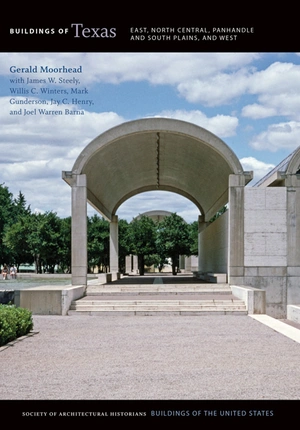
Austin architects Heather McKinney and Al York responded to the Spanish Renaissance character mandated by the university with simple square cornices that create suggestive shadows rather than replicating the ornate trim found elsewhere on campus buildings. The quality of the chapel’s brickwork, using a blend of tawny brick, likewise conveys an abstracted historicism. The long, narrow nave has lower wings front and rear, and the raised end walls of nave and wings have stepped parapets with gently curving central steps. The bell-cote is a thick plane, revealing a respectful Postmodern abstraction of history rather than an effort to appropriate it.
The appropriation of history bedevils twenty-first-century architecture at Texas Tech. The English, Philosophy, and Education complex (2002), the Flint Avenue Parking Facility (2002), and the west side additions to Jones AT&T Stadium (2003) neither mimic the architectural history of Texas Tech nor pay tribute to it. A more nuanced approach, like the chapel, is evident in additions to the Student Union Building (2003, 2006, Holzman Moss Architecture) and in the Experimental Sciences Building (2008, CO Architects and Adling Associates).

